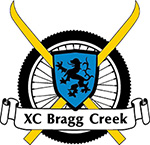Nordic FAQ
- Why Rock Skis:
- Rock skis are an important part of any athlete’s arsenal. The snow we train on is not always in the best condition and having an inexpensive pair of skis can take-away the stress of accidentally skiing over a rock and damaging the base of your skis.
- This is particularly important for those skis who like to build jumps and “fly” through the air…
- Training Skis:
- Training skis are the everyday work horse for each athlete, they may even act as race skis for younger athletes.
Training skis should be kept in good condition, sized correctly to the athlete’s weight and height, and be waxable in the case of classic skis.
Skis with “fish-scales” on their base should be avoided if possible.
- Training skis are the everyday work horse for each athlete, they may even act as race skis for younger athletes.
- Race Skis:
- As athletes begin to race more frequently, race skis become a necessity. Having race skis allows athletes to keep wear solely to their Training and rock skis, leaving their racing skis fast as ever.
Having a pair of racing skis also allows athletes to warm up on their training skis while coaches wax race skis for optimal performance at each race.
- As athletes begin to race more frequently, race skis become a necessity. Having race skis allows athletes to keep wear solely to their Training and rock skis, leaving their racing skis fast as ever.
- Pole length:
- For athletes in the Nordic Ninjas program, classic poles should fit uncomfortably under the athletes armpit, while skate poles should fall between the athletes chin and nose.
Athletes in the Club Racer program should have classic poles measuring no more than 85% of their body height in ski boots. With skate poles falling between the base of their chin and just below the athletes nose, based on personal comfort and preference.
- For athletes in the Nordic Ninjas program, classic poles should fit uncomfortably under the athletes armpit, while skate poles should fall between the athletes chin and nose.
- Training Plans:
- Monthly training plans are individualised plans made for each athlete by the Head Nordic Coach. They are used to guide athletes training when not at regular XCBC practices. Monthly Training Plans are highly encouraged for all athletes within the Club Racer program.
- Cold Weather:
- All programs are subset to a cold weather cut-off at -20ºc without wind chill. Practices may be shortened at any point by coach discretion, or cancelled at temperatures above the -20ºc cut-off for safety concerns.
- Rain and Lighting:
- Practice will continue to run during rain, however if lighting is present in the area or is a potential risk, practices will be cancelled. If lighting becomes present part-way through a practice, the practice will end, athletes and coaches will seek shelter and parents will be contacted.
